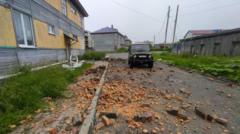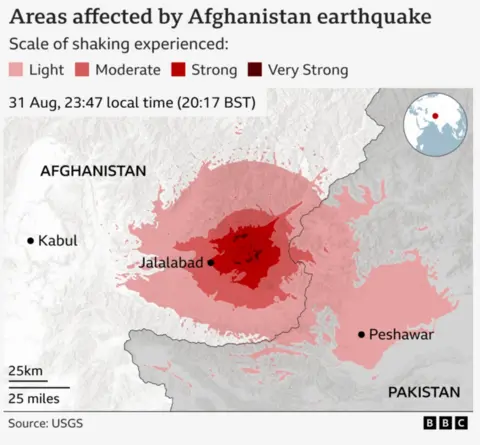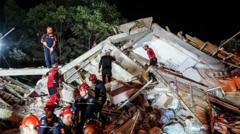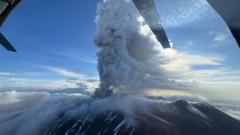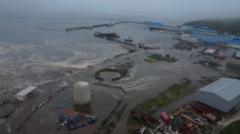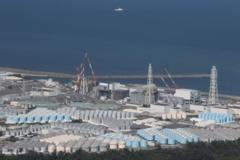The Kamchatka Peninsula in eastern Russia experienced a significant seismic event, registering an 8.8-magnitude earthquake at 11:25 local time on Wednesday. This incident heightened tsunami concerns reminiscent of past devastating events in 2004 and 2011, prompting mass evacuations for coastal dwellers across the Pacific. However, the resultant tsunami was surprisingly less severe than anticipated, leading experts to explore the reasons behind this phenomenon.
The Kamchatka Peninsula is situated along the "Pacific Ring of Fire," a geologically active zone renowned for earthquakes and volcanic activity. The tectonic activity here is driven by the interaction of the Pacific plate and the smaller Okhotsk microplate. As the Pacific plate descends beneath the microplate, stress accumulates until it is suddenly released, causing a megathrust earthquake.
Dr. Stephen Hicks from University College London notes that such powerful earthquakes rupture large fault areas, creating significant magnitudes. Although Kamchatka is known for its seismic activity, this recent quake, while powerful, did not generate a tsunami of the catastrophic proportions feared.
The size and height of tsunami waves are influenced by multiple factors including deformation of the ocean floor during the earthquake, local seafloor shapes, and land configurations where the tsunami arrives. Fortunately, the tsunami spawned by Wednesday's earthquake measured waves of only about 4 meters (13 feet) in height at most, far less than the towering waves associated with historical tsunamis.
Initial seismic observations indicated the earthquake originated at a depth of approximately 20.7 kilometers (12.9 miles), a characteristic that usually correlates with a more substantial seafloor displacement and possibly, larger tsunami waves. However, the depth may have been overestimated, potentially lowering wave amplitude predictions.
Moreover, advancements in tsunami early warning systems have contributed to a more controlled response to such seismic events. Countries across the Pacific leverage these systems to alert populations about potential tsunamis, enabling timely evacuations. This contrasts starkly with the 2004 Boxing Day tsunami, during which many victims were caught unprepared.
Despite the absence of significant tsunami damage this time, monitoring continues, as the Geophysical Survey of the Russian Academy of Sciences anticipates potential aftershocks in the weeks to come. The tsunami risk from large earthquakes remains a global concern, making continual evaluation and improvement of early warning systems critical to saving lives in coastal areas.
The Kamchatka Peninsula is situated along the "Pacific Ring of Fire," a geologically active zone renowned for earthquakes and volcanic activity. The tectonic activity here is driven by the interaction of the Pacific plate and the smaller Okhotsk microplate. As the Pacific plate descends beneath the microplate, stress accumulates until it is suddenly released, causing a megathrust earthquake.
Dr. Stephen Hicks from University College London notes that such powerful earthquakes rupture large fault areas, creating significant magnitudes. Although Kamchatka is known for its seismic activity, this recent quake, while powerful, did not generate a tsunami of the catastrophic proportions feared.
The size and height of tsunami waves are influenced by multiple factors including deformation of the ocean floor during the earthquake, local seafloor shapes, and land configurations where the tsunami arrives. Fortunately, the tsunami spawned by Wednesday's earthquake measured waves of only about 4 meters (13 feet) in height at most, far less than the towering waves associated with historical tsunamis.
Initial seismic observations indicated the earthquake originated at a depth of approximately 20.7 kilometers (12.9 miles), a characteristic that usually correlates with a more substantial seafloor displacement and possibly, larger tsunami waves. However, the depth may have been overestimated, potentially lowering wave amplitude predictions.
Moreover, advancements in tsunami early warning systems have contributed to a more controlled response to such seismic events. Countries across the Pacific leverage these systems to alert populations about potential tsunamis, enabling timely evacuations. This contrasts starkly with the 2004 Boxing Day tsunami, during which many victims were caught unprepared.
Despite the absence of significant tsunami damage this time, monitoring continues, as the Geophysical Survey of the Russian Academy of Sciences anticipates potential aftershocks in the weeks to come. The tsunami risk from large earthquakes remains a global concern, making continual evaluation and improvement of early warning systems critical to saving lives in coastal areas.

